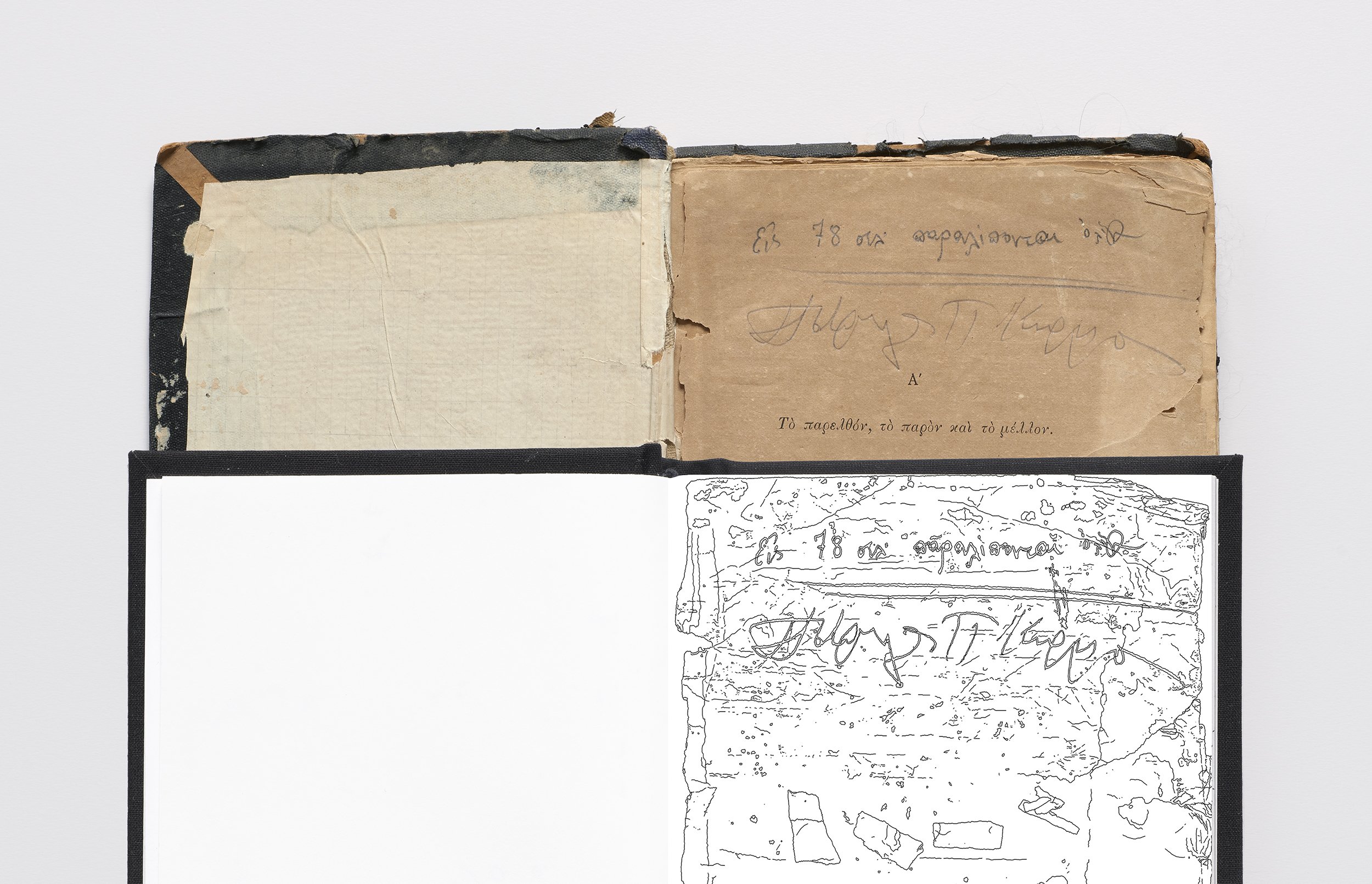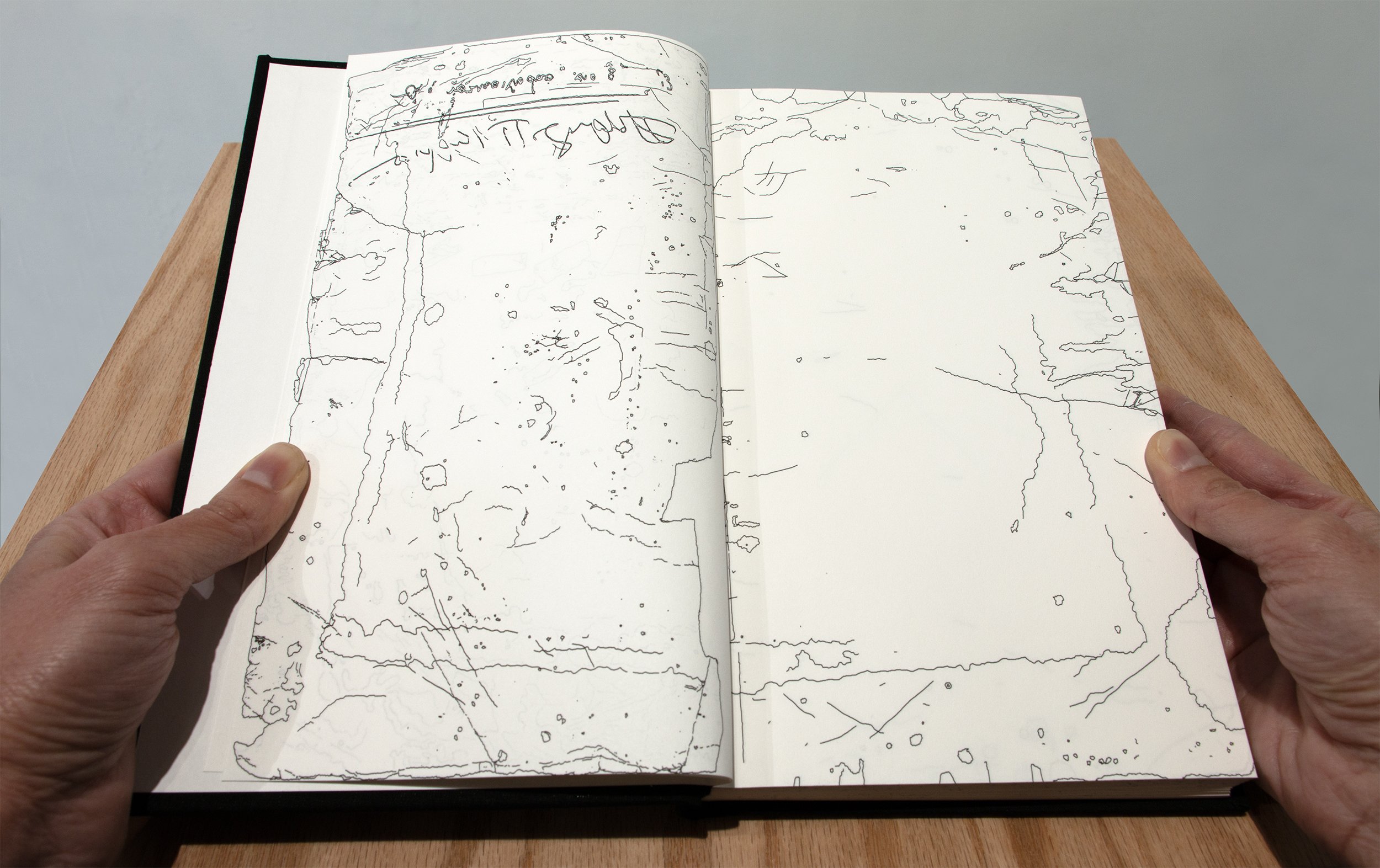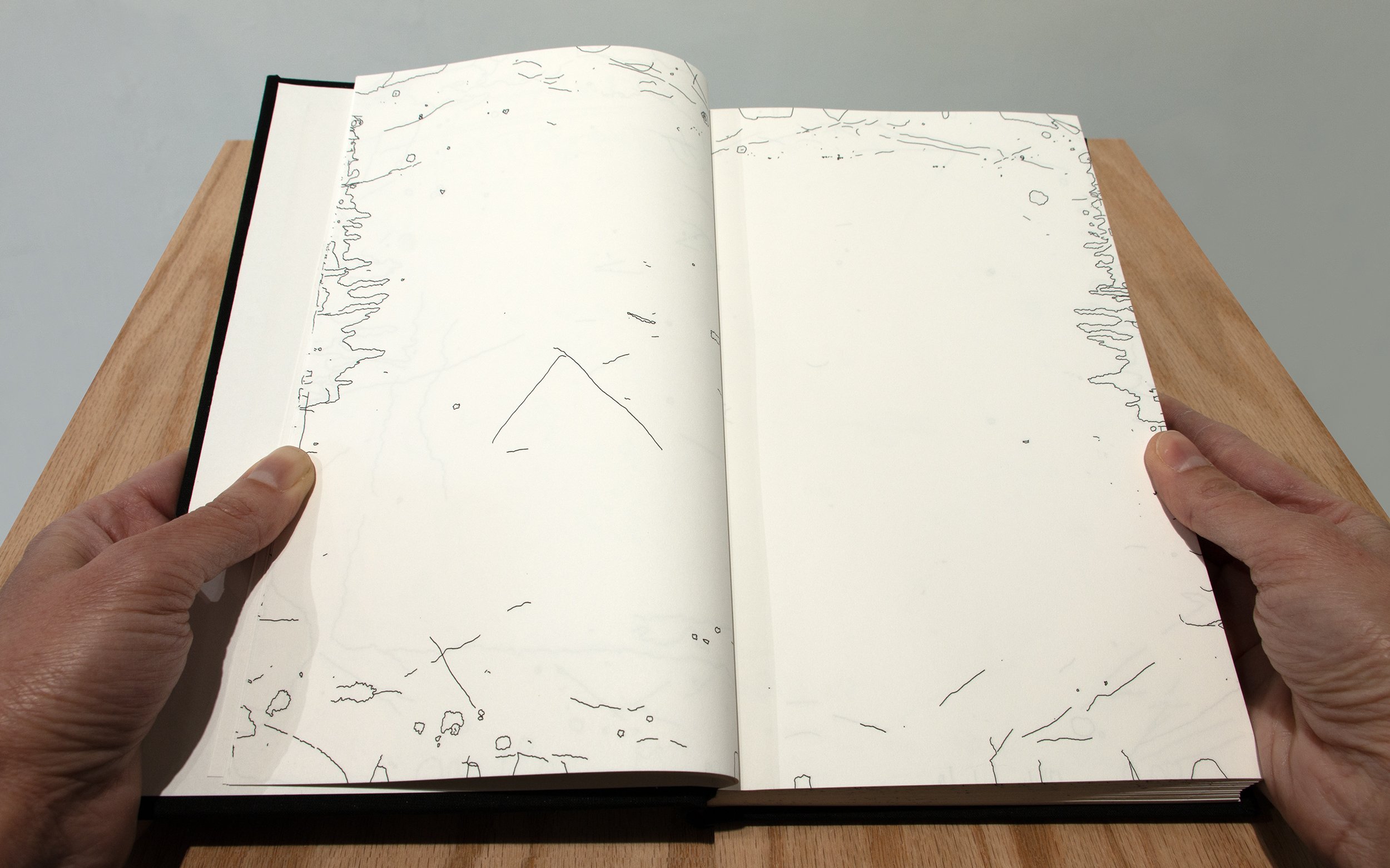A Partial History, 2024
Solo exhibition, NARS Foundation, Brooklyn, NY, USA, April 12 - May 15, 2024
NARS Foundation is pleased to announce A Partial History, an ongoing work engaging with the multidimensional character of marks, language, translation, embodiment, knowledge, and history.
Kassianidou began this work in 2016, as she was leaving her home country, Cyprus, and immigrating to the US. The work revolves around a collection of 19th and early 20th-century books—primarily schoolbooks—written in Greek, that belonged to the artist’s grandparents and great-grandparents and that the artist found in her late grandmother’s library. Fields covered in these books include history, geography, Greek grammar, and religious studies.
Kassianidou “re-reads” each book as a material object rather than a text, focusing on marks of use and time: folds, creases, tears, stains, pencil marks, discolorations, and wormholes. For each book, she meticulously traces these marks by hand, page by page, and then prints and binds the drawings into a new book containing only the excavated marks. The recreated books become archives of lines, suggesting narratives of time, touch, and distributed agency. They become alternative history books, recording the history of handling of each original book—a history unfolding in parallel with family, local, national, and world events.
Furthering this process of book translation, Kassianidou makes two-sided graphite drawings based on the book tracings. These drawings are approximately ten-time magnifications of the tracings, referencing human scale. One drawing corresponds to one book, with one side depicting the marks from the odd pages superimposed and the other side the marks from the even pages. The accumulated lines map the shifting terrain of each book while compressing time and revealing its effects all at once.
The exhibition juxtaposes two languages: Greek, which may be unreadable to a non-Greek-speaking audience, and the drawn marks, which evoke different forms of “reading” and “writing.” The “unreadable” marks recall an embodied and potentially shared mode of knowing, one that depends on touching, feeling, and handling objects. These marks may be more readable to a non-Greek-speaking audience than the Greek characters in the original books. The lines between readability/unreadability and language/non-language dissolve through our shared movement in and touching of the world.
The work presented in the exhibition was supported, in part, by a CHA Faculty Fellowship from the Center for Humanities & the Arts at the University of Colorado Boulder, and by a RIO Arts & Humanities Grant from the Research & Innovation Office at the University of Colorado Boulder
The exhibition is accompanied by an online and physical publication with texts by Mary Annunziata and Marina Kassianidou. Online publication: https://issuu.com/marinakassianidou/docs/a_partial_history. For a physical copy, contact the artist.


























